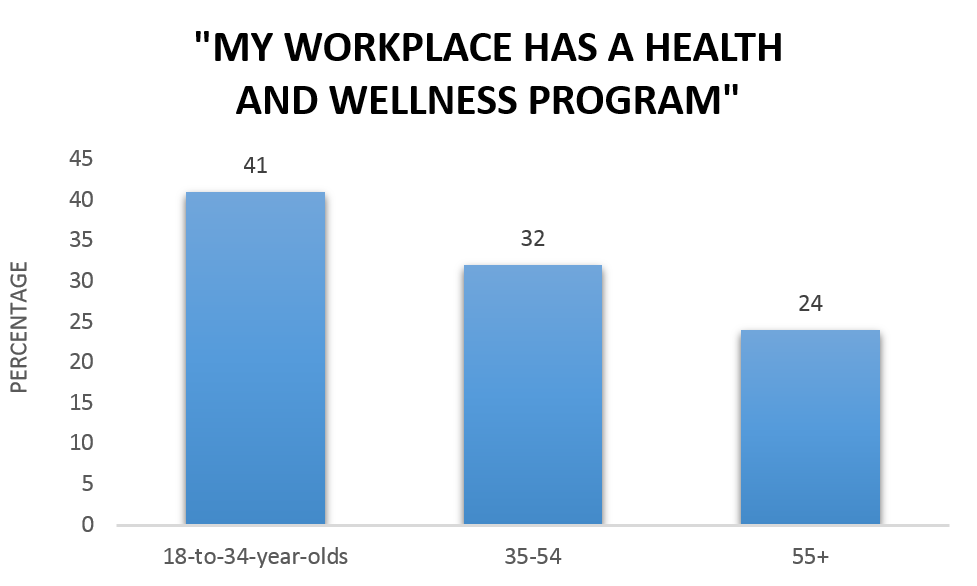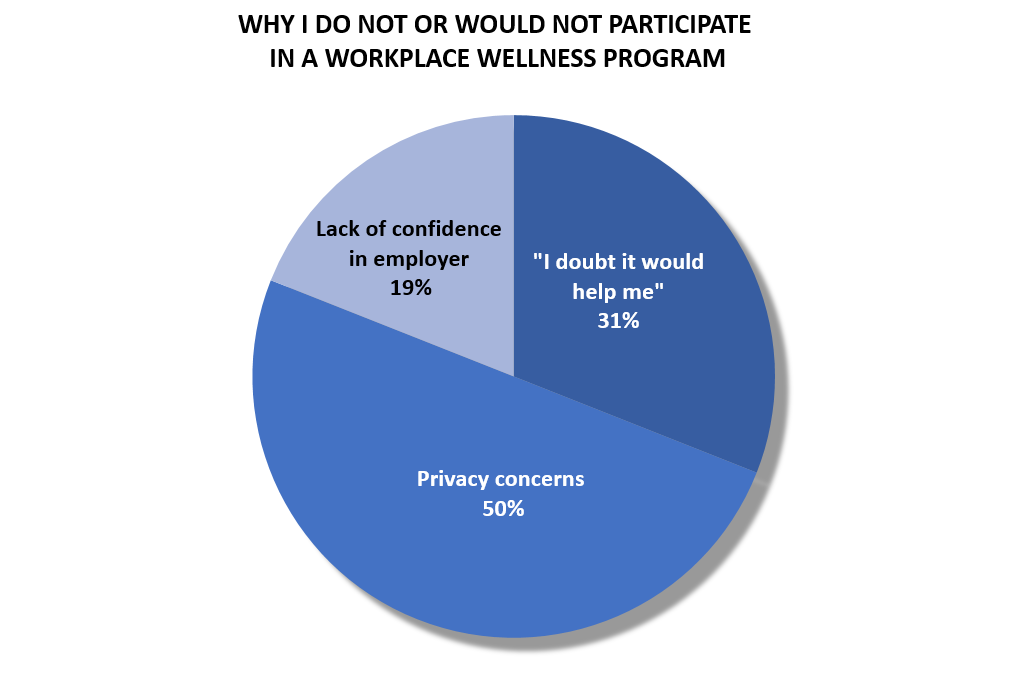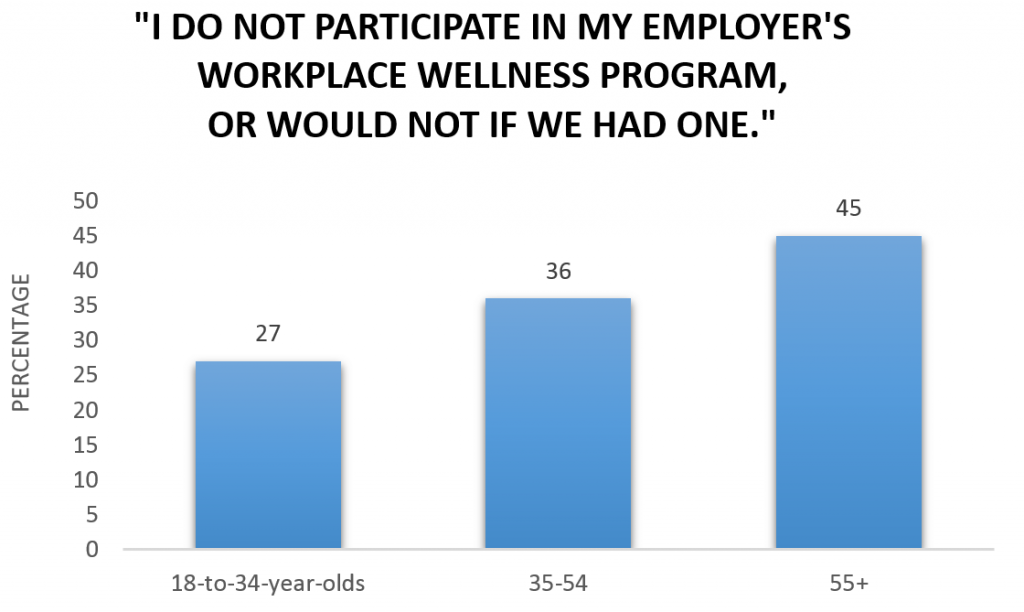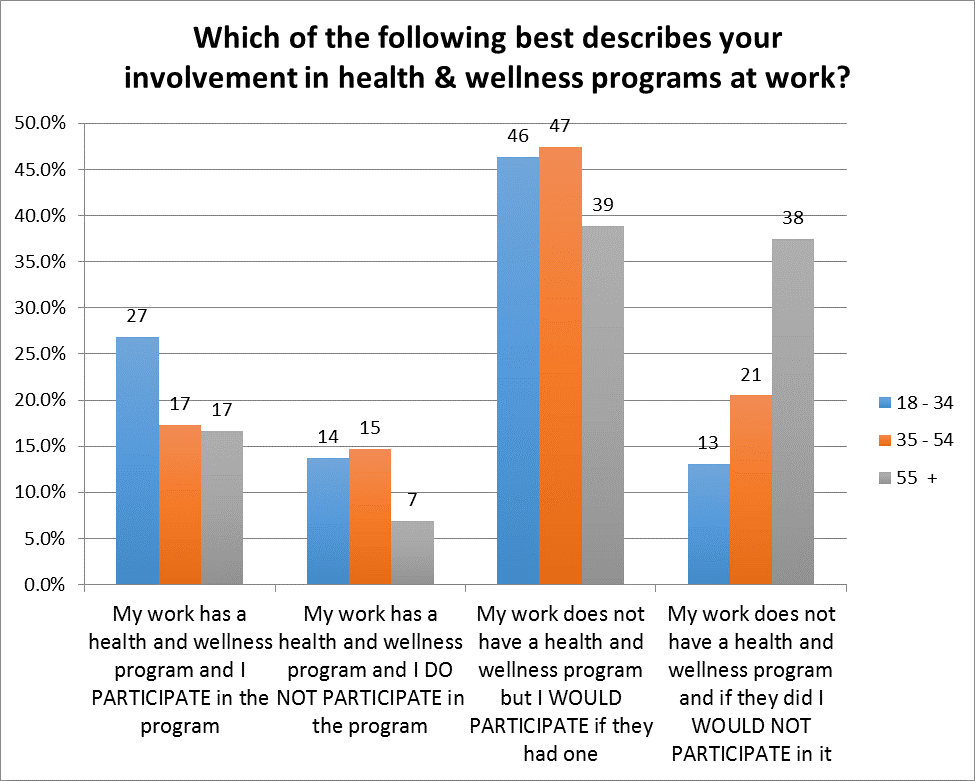
Companies must spotlight what they’re offering and why it’s valuable
BOSTON, Aug. 5, 2015 – Although 7 in 10 American workplaces offer wellness programs, a new Brodeur Partners survey suggests many employees don’t know that programs in their workplaces exist.
Only approximately one-third (34 percent) of employed Americans surveyed by Brodeur in June said they have a health and wellness program at work in stark contrast to a recent study by the Society for Human Resource Management, which puts the prevalence of such programs at 70 percent.
“Clearly, there’s a disconnect,” said Brodeur Partners CEO Andrea Coville, author of Relevance: The Power to Change Minds and Behavior and Stay Ahead of the Competition. “Either employees aren’t getting the memo about the programs that exist in their workplaces, or they don’t consider what their employers are offering to be true wellness programs. Companies need to communicate clearly, aggressively and creatively about what they’re offering and how the programs can enhance their employees’ well-being.”
The Brodeur findings buttress other research documenting a workplace wellness communications disconnect. While more than 85 percent of U.S. employers with more than 1,000 employees offer a wellness program, only 60 percent of these are aware that their company offers one, according to Gallup.
The Brodeur Health and Wellness survey was based on interviews with 542 adult Americans and covered not only workplace wellness, but diet, exercise and wearable fitness devices – topics that Brodeur will explore publicly in coming weeks.
Accessibility is another issue
Lack of awareness isn’t the only explanation for an employee indicating her company lacks a wellness program. Sometimes there’s just no program. And the likelihood of that seems to increase with an employee’s age.
Only 32 percent of those age 35 to 54 and only 24 percent of the 55-plus segments indicated they had a workplace wellness program compared to more than 2 in 5 millennials (18 to 34).

Why some employees push back
Workplace wellness programs are designed to improve employees’ health and productivity while reducing healthcare costs. These programs can include health risk assessments, help managing chronic conditions, and coaching for a healthier lifestyle.
As good as these offerings sound, some employees resist them. The reasons respondents to the Brodeur survey said they do not or would not participate in workplace wellness programs include privacy concerns (50 percent), doubt that such programs would be helpful to them
(31 percent), and lack of confidence in an employer’s ability to run an effective program (19 percent).

The likelihood of resisting workplace wellness programs increases with employee’s age, the survey found. Fewer than 1 in 3 millennials (27 percent) said they either do not participate in their workplace wellness program or would not if their workplace had one. Such resistance jumps to over 36 percent for Gen X and nearly half (45 percent) of the 55-plus baby boomer generation.

The opportunity
“This is a troubling inversion, but there’s an opportunity here,” said Coville. “Older workers, given that they are at higher risk for many conditions, are likely to deliver the biggest return on investment in a wellness program. Employers that can effectively address the concerns of older workers, who certainly value their well-being as much as anyone, can suddenly possess a sizeable population of new advocates.”
The opportunity for wellness providers is significant, especially given the pent-up demand for programs in workplaces that don’t offer them, or in workplaces where employees don’t know about them. Nearly half the respondents (45 percent) said they would participate if their workplace offered a wellness program, including 46 percent of millennials, 47 percent of
Gen Xers and 39 percent of boomers.
“Like a lot of our research, these findings reveal stark generational differences in attitudes,” said Jerry Johnson, Brodeur executive vice president of planning, who led the research. “Understanding and systematically addressing these differences is the key to changing not only minds, but behavior around workplace wellness.”
To make wellness programs resonate with employees, communications efforts must not only make compelling logical arguments but tap into the values American workers hold, the communities they belong to, and the sensory experiences that influence them. These are the pillars of Brodeur’s strategic relevance platform.
For more on the workplace wellness challenge, see the Brodeur white paper at http://ow.ly/Qu9eM.
Methodology
The Brodeur Partners relevance study was conducted June 3-5 and was based on interviews with 542 adult Americans (n=542) drawn from Toluna’s national QuickSurvey panel. Survey results were weighted based on U.S. Census data to reflect the exact demographic profile of gender, age and region of the national population.
###
Additional charts from the research:


